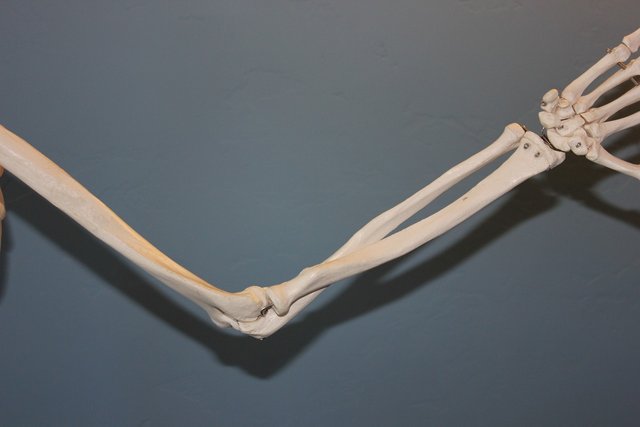Hello friends, welcome to my publication.
Tennis elbow, clinically termed lateral epicondylitis, is a prevalent condition that takes place and impacts the tendons and muscles on the lateral or outer side of the elbow. It is definitively marked by pain, inflammation, and stiffness in the affected region.
Causes of Tennis Elbow
There are various causes of tennis elbow, these are the widespread causes:
Occupational hazard
Some occupations like construction, carpentry, or plumbing, may raise the risk of developing tennis elbow as they expose the forearm and wrist muscles to recurring use. This may be referred to as occupational hazards.
Age
This is another cause of tennis elbow. As one grows older, the muscles and tendons grow feeble hence increasing the chances of tennis elbow. This is why tennis elbow is more prevalent in people above 40 years old.
Excessive use
Excessive use or monotonous strain on the forearm muscles and tendons can also result in tennis elbow
Repetitious strain
Repetitive activities that have to do with twisting, gripping, or lifting, like tennis, rowing, or golf, can cause tennis elbow.
Low-quality technique
Tennis elbow can also occur due to low technique or biomechanics in the course of carrying out activities like golf or tennis.
Symptoms of Tennis Elbow
The following are most of the observable symptoms of tennis elbow:
Pain
Pain or tenderness on the outer elbow that radiates to the forearm or wrist is significant and should not be ignored.
Rigidity
Stiffness or finite movability in the elbow or wrist.
Vincibility
Weakness or weariness in the wrist or forearm.
Protuberant elbow
The outer elbow may swell or have redness.
Types of Tennis Elbow
There are some types of tennis elbow:
Panner's Disease
This is a rare type of tennis elbow mostly affecting children and adolescents. It is definitively marked by inflammation as well as capitallium (a bone in the elbow joint) fragmentation.
Medial Epicondylitis
This is a relatively rare type of tennis elbow, comprising approximately 10% of all cases, characterized by significant pain and inflammation within the elbow.
Chronic Tennis Elbow
This variant of tennis elbow is characterized by persistent inflammation and severe pain in the affected area. It typically arises from prolonged, repetitive strain on the tendons and forearm muscles, leading to significant discomfort that demands attention.
Radial Tunnel Syndrome
This is another category of tennis marked by radial nerve (running through the elbow and forearm) compression. It can result in pains, tingling, and numbness in the region affected.
Lateral Epicondylitis
This type of tennis elbow is the most prevalent, accounting for about 90% of all cases. It’s important to recognize its characteristics, including pain and inflammation on the outside of the elbow, so appropriate treatment can be initiated to promote healing and recovery.
Acute Tennis Elbow
This particular type of tennis elbow manifests as an abrupt onset of pain and inflammation in the affected area. It is often the direct result of repetitive strain and a sudden increase in activity involving the tendons and forearm muscles.
 Source Source |
|---|
How would you diagnose a tennis elbow? Any clinical investigation or assessment tests?
Tennis elbow diagnosis may involve a combination of methods which are as follows:
Clinical Evaluation
This will involve assessing the patient's medical history by getting information from the patient regarding medical history, symptoms as well as life. Symptom examination will also be carried out to assess the patient's symptoms as well as the location, duration of pain, and severity.
Physical Examination
In this, we will carry out elbow and forearm visual inspection for signs of redness, deformity, and swelling. We will also need to palpate the affected region to identify regions of tenderness. Furthermore, the elbow and forearm range of motion will be assessed alongside testing for the strength of the muscles of the forearm
Imaging Tests
We can further employ X-rays to ascertain conditions like arthritis and fractures or Ultrasound and magnetic resonance imaging (MRI) to examine the ligaments and tendons of the affected region.
Special Tests
We can equally carry out special tests such as Cozen's test, mills test, and finger test to check the elbow, the wrist, and the forearm, as well as the finger against resistance to ascertain positivity to tennis elbow.
Finger Stretch
https://youtube.com/shorts/N-ETuG9Jato?si=9kRlz61klQJUDSs0
Wrist Flexor Stretch
https://youtube.com/shorts/JOHDsc82v1o?si=wPzpKPWTRakoRAvc
Forearm Stretch
https://youtube.com/shorts/Mut6oOBB90U?si=-J5OXDQcQfnA6oOj
The effects of engaging or carrying out the above exercise were obvious. I felt an increased finger and wrist range of motion and flexibility in addition to spasms in the muscles of the wrist flexor, fingers, and hand.
I also felt a kinda elevation of discomfort and pain in the wrist, fingers, and forearm and a sort of improvement in the strength of grip and reduction of muscle tension as well as feelings of improved blood flow and circulation.
Thanks
Cc: @ashkhan
Inviting @mercybliss, @jasminemary, @vickyson

X promotion link
Downvoting a post can decrease pending rewards and make it less visible. Common reasons:
Submit
Thank you for understanding the lesson and sharing your assignment; I hope that you will enjoy this week's lesson and try to implement it in your life if you see any such case.
Observations
Task 1 (3/3)
You have shared a great knowledge about tennis elbow, its symptoms, cause, it's types. That's good you explain the types of tennis elbow. I appreciate your effort.
Task 2 (2.7/3)
In the second question, you tell us about how you have to assess a patient by doing physical examination, history taking, special tests and investigations. It would be better to add explanation of special tests. Great.
Task 3 (3.3/4)
You try the finger stretches, wrist flexor stretch, forearm stretching. Forearm stretching was not included in the weekly lesson post. You did the finger stretches, and wrist flexor stretch correctly. Always remember to apply heat pack in chronic condition and ice pack in acute condition before performing exercises to relax the muscles and reduce stiffness. I appreciate your efforts.
Overall you made a great attempt to answer all the questions. I appreciate your efforts. You improve a lot than last week. Keep it up. But next time try to avoid the above written suggestions. Keep learning and try to implement your knowledge to the people suffering from tennis elbow or any type of wrist. Thank you.
Downvoting a post can decrease pending rewards and make it less visible. Common reasons:
Submit
Thanks so much for the kind reviews and suggestions, am appreciative
Downvoting a post can decrease pending rewards and make it less visible. Common reasons:
Submit